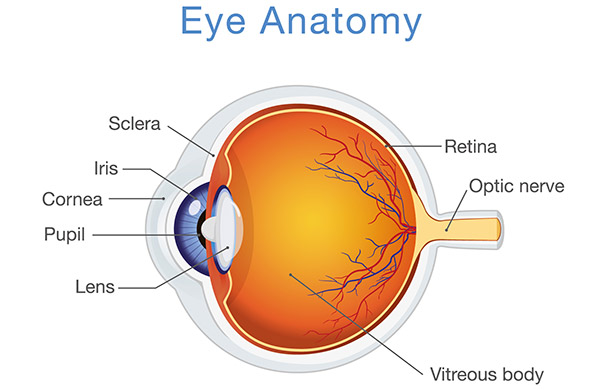
Most people rely on their eyes to see and make sense of the world around them. But some eye diseases can lead to vision loss, so it is important to identify the causes of eye diseases and treat them as early as possible. So knowledge is power, especially when dealing with health issues concerning your eyes. Understanding each part of your eye and what it does and how the eye works can help give perspective to your condition.
- Lens is the clear part of the eye behind the iris that helps to focus light on the retina. It allows the eye to focus on both far and near objects.
- Iris is the colored part of the eye. It regulates the amount of light entering the eye through the pupil.
- Pupil (PYOO-pul) is the opening at the center of the iris. The iris adjusts the size of the pupil and controls the amount of light that can enter the eye.
- Cornea (KOR-nee-uh) is the clear dome covering the front of your eye. It helps your eye focus light so things look sharp and clear.
- Sclera (SKLEH-ruh) is the white outer coating of the eye.
- Vitreous humor (VIT-ree-us HYOO-mer) is the clear gel that fills the inside of the eye.
- Optic nerve (OP-tic nurv) is the bundle of more than one million nerve fibers that carry visual messages from the retina to the brain.
- Retina (REH-tin-uh) is the light-sensitive tissue lining the back of the eyeball. It sends electrical impulses through the optic nerve to the brain.
Common Vision Problems
Here are some common vision problems:
- Unusual trouble adjusting to dark rooms
- Difficulty focusing on near or distant objects
- Squinting or blinking due to unusual sensitivity to light or glare
- Change in color of iris
- Red-rimmed, encrusted, or swollen lids
- Recurrent pain in or around the eyes
- Double vision
- Dark spot at the center of viewing
- Image distortion
- Excess tearing or “watery eyes”
- Dry eyes with itching or burning
- Seeing spots or ghost-like images



